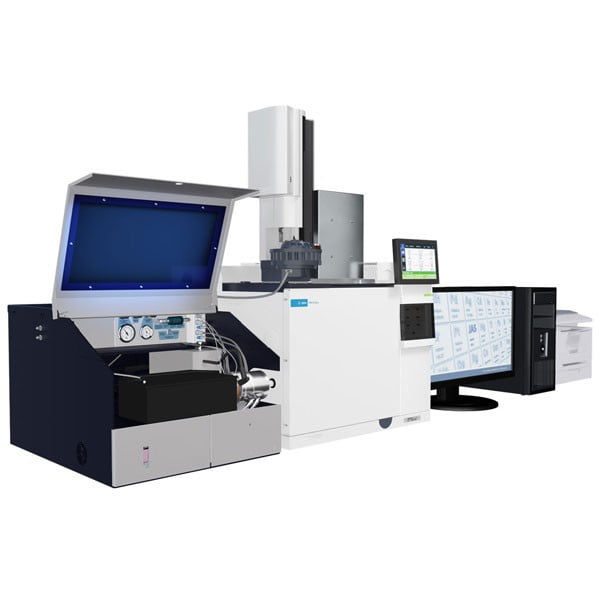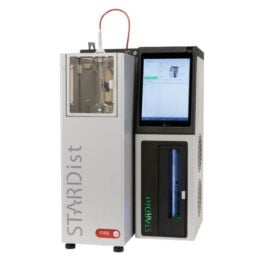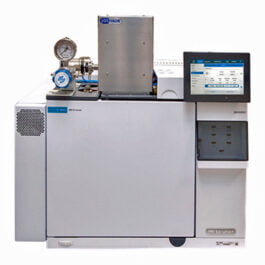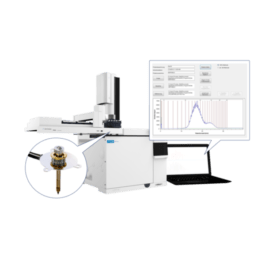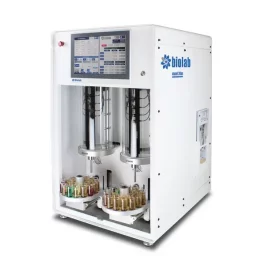Atomic Emission Detector
Atomic Emission Detector for GC AED III
JAS AED III is the only commercially available Atomic Emission Detector for gas chromatography. A single JAS AED can be used instead of several element-specific systems for routine analyses.
The AED allows you to detect a great number of specific elements within any volatile compound (except helium, the carrier gas) at picogram level sensitivity. Sophisticated Multielement Detection moves from the Research to the Routine Laboratory
- Matrix independent
- FIVE times more sensitive than GC-FID for Carbon
- FIVE times more sensitive with higher linearity than GC-FPD for Sulfur
- More sensitive than GC-MS in SCAN mode
- More selective than GC-NPD and GC-ECD in complex sample matrices.
- Much versatile than GC-SCD.
- Sensitive Universal and Selective Element Detection for Routine and Research Analyses
- Snapshot Capabilities
- Selectively detect compounds containing any of over 20 pre-set elements, including organo-metallic species and compounds labelled with stable isotopes.
- Automatically profile a sample by sequencing detection of any number of elements in the sample.
- Calibrate with any readily available compound containing the element
- Analyse higher-boiling compounds with operation up to 450°C.
- Conduct trace-level analyses
A single GC-AED system can replace multiple dedicated GC systems that use element-specific detectors for analyzing various refinery process streams. The JAS AED transports sophisticated research capabilities into a reliable, cost effective instrument that is easy to use and maintain-ideal for both routine QA/QC and research laboratories. JAS AED as a universal element detector can be used as a screening tool for target and unknown compound analyses with unmatched precision.

To search for the presence of an element in a chromatographic peak, an emission spectra “snapshot” helps to provide the answer. JAS AED can save a snapshot of the entire wavelength range where the photodiode array is positioned.
Modularized design for convenient maintenance or repair. JAS AED is reliable instrument with minimal downtime. Smaller size to fit any workbench.
Optimizing Process Operations while meeting targed Impurity Levels.
The GC-AED system is much faster than physical distillation of feedstocks to determine the temperature distributions of targeted elements. The system provides this information for a wide range of elements, including sulfur, nitrogen, and metals as well as underlying hydrocarbon content – the only GC detector system with this capability.
Detectable Elements
Wide Range
Antimony● Lead ● Chlorine ● Phosphorus ● Carbon (13) ● Iodine ● Tellurium ● Argon ● Manganese ● Deuterium ● Selenium ● Carbon ● Oxygen ● Tin ● Hydrogen ● Arsenic ● Mercury ● Fluor ● Silicon ● Vanadium ● Iron ● Nitrogen (14) ● Nitrogen (15) ● Boron ● Nickel ● Germanium ● Sulfur ● Xenon ● Krypton ● Carbon (12) ● Bromine
High Resolution
Antimony ● Arsenic ● Carbon (12) ● Carbon (13) ● Carbon ● Germanium ● Iodine ● Nitrogen ● Oxygen ● Phosphorus ● Selenium ● Silicon ● Sulfur
Microwave Generator
- Frequency: 2,450 MHz
- Power level: 70 watts
- Power tube: TO300-M23
- Tuning: Not required
- Stray emission: <5 mW/cm2 at 5 cm
- Coupling to cavity: 75 ’36 mm
Microwave Plasma
- Cavity: Reentrant design
- Discharge tube: Water-cooled, 0.1 mm thick walls
- Ignition: Automatic
- Exhaust: From discharge tube into a purged chamber to prevent air diffusion
Spectrometer
- Type: 0.25 μm Flat Field
- Wavelengths: 160 to 720 nm
- Weight and Dimensions: 37 kg 40.5 cm high x 51 cm wide x 63.5 cm deep
- Power : 240 VAC (2.5A) (50 – 60 Hz)
A Microsoft® Windows TM operating environment makes the JAS AED easy to learn and use. Setup of system parameters and data analysis-similar to the Agilent GC ChemStation is Automated. Quickly change methods using the Agilent GC to set pressures electronically without bubble meters. An optional system configuration can even allow JAS AED reagent gas pressures to be set electronically when plumbed through the Agilent GC to optimize element analyses.
JAS AED can save a snapshot of the entire wavelength range where the photodiode array is positioned. Users can pull up the snapshot at the apex of the peak and because most elements have a distinctive pattern, conclusively prove, or disprove the presence of that element.
Petroleum Applications
- Optimizing Process Operations while meeting targed Impurity Levels
- Finished Gasoline (Sulfur, nitrogen and oxygenates)
- Analysing crude oils and fluidized-bed catalytic cracker (FCC) feedstocks
- Analysis of trace-level impurities in polymer grade propylene
- Characterizing the temperature distribution of impurities that can interfere with FCC
- Monitoring refinery processes such as hydrotreating to remove sulphur- and nitrogen.
- Monitoring levels of expensive product additives in fuels and lubricating oils.
- Online monitoring of impurities in semiconductor production.
Environmental Applications
- Screening for Pesticides
- Pre-screen compounds by element, rapidly locating peaks of interest
- Screen for the correct composition of elements after a library search for possible matches.
- Pesticides in Food Products
- Chemical Dump Site Soil Extract
- Organotin in Marine Sediment
- Urine Spiked with Caffeine

